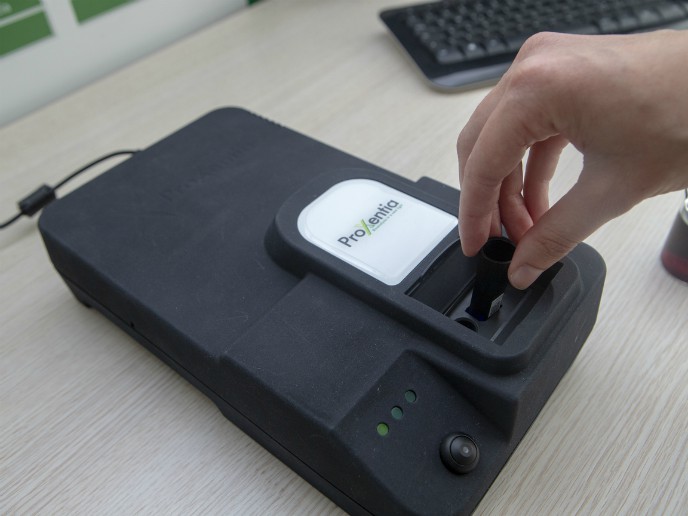A 20-minute test for uncompromising food safety
A growing world population, international trade and rising consumer demand for high-quality and ever-safer products are putting the food industry under great pressure. Never have food safety monitoring systems been so crucial, and never have they seemed less up to the task either. In such a context, it seems only right for the sector to crave multi-parameter, onsite, fast and flexible testing devices, as opposed to currently available in-lab benchtop equipment and fast but imprecise onsite test devices. The first company to meet these requirements certainly has a bright future ahead, and Italian SME Proxentia – a spin-off of the University of Milan – is well aware of it. In 2014, Proxentia was granted EU funding for a feasibility study on its innovative portable food testing device, capable of detecting allergens and mycotoxins in a liquid matrix. Now, they’ve just completed phase 2 of this SME Instrument-supported project, and they are getting ready to enter the wine and cereal markets. “The STEFY project is about providing easy, precise and reasonably priced measurements of food safety at production sites which cannot be obtained with present technologies,” says Matteo Salina CEO at Proxentia, continuing: “Our patented Reflective Phantom Interface (RPI) technology exploits the basic optical properties of light reflection. When a light beam hits the interface between distinct materials, a reflected beam is produced. The technology immobilises particular receptors on tiny spots of the sensor surfaces, receptors selectively ‘capture’ the target molecules whose presence and/or concentration must be determined, and the reflectivity of the spots gives a direct, quantitative and real-time measurement of the amount of captured target molecules. We can measure and quantify tens of molecular targets simultaneously, each by a distinct spot.” STEFY (Sensor Technology for Food analYsis) also stands out through its portability and cost-effectiveness. It is composed of three main components: single-use cartridges to detect and quantify multiple molecular targets in a liquid sample; a compact reader performing the analysis thanks to Proxentia’s RPI technology and sending it over to a remote control unit using WiFi; and dedicated software for smartphones, tablets and laptops to help users control the reader and analyse the results. A combination that, according to Salina, will “revolutionise the world of food safety”. Imagine a tanker truck filled with wine ready to be bottled or assessed by an oenologist: in such situations, timing is crucial. Proxentia’s technology will provide all the information needed and send it to the user in 20 minutes, and the risk of finding an end-product with non-conforming components is completely eliminated. Promotion towards oenologists, specialised journalists, producers, bottlers and laboratories has already begun, and Salina says that they are very enthusiastic about the device. Thanks to phase 2 funding, Proxentia has been able to complete the device’s industrialisation phase. The company has already started approaching potential clients, and new cartridges for additional food applications such as milk and entirely different domains such as disease diagnosis are currently in development.
Keywords
STEFY, Proxentia, food safety, testing, technology, allergens, mycotoxins

